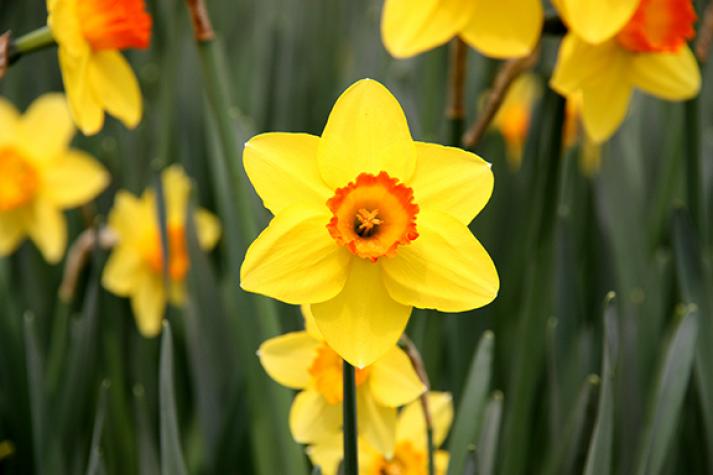COLUMBIA, Mo. – Fall is an ideal time to establish daffodils for a glorious show of color next spring.
With adequate drainage, daffodils thrive in most Missouri soils for years and are relatively pest-free, says University of Missouri Extension horticulturist David Trinklein.
“They are one of the most vigorous, colorful spring flowers and provide great pleasure with minimal effort,” Trinklein says.
“Daffodil,” the plant’s English common name, is thought to be a corruption of “affodell.” The latter, in turn, was derived from Asphodelus, a genus of garden plants native to Europe. Today, however, most authorities reserve the name daffodil for the large-trumpeted members of the genus Narcissus.
According to Trinklein, good soil drainage is essential for daffodils. Bulbs in poorly drained soil weaken quickly, fail to flower after the first year and often develop bulb rots. Incorporate organic matter into soil to improve drainage.
Ideally, daffodils should get at least five hours of sunlight each day. However, since much of their growth and photosynthetic activity occurs early, before trees foliate, you can plant them under or near trees. Avoid planting them on the north sides of buildings or near tall, dense evergreens.
“Do not fertilize daffodils too heavily,” Trinklein says. When preparing the soil for planting daffodils, incorporate a complete garden fertilizer with a 1:2:2 or 1:3:3 N-P-K ratio, such as 5-10-10. Avoid fertilizer that’s high in nitrogen. Mix fertilizer thoroughly with the soil. Never place it directly in the bottom of a hole where a bulb will be planted.
Daffodil bulbs need time to develop a good root system before cold weather sets in. Planting bulbs in October will allow this to happen. Select large, firm, double-nosed bulbs free from any obvious defect or disease.
When planting, space daffodils 6-12 inches apart, depending on the cultivar and desired flowering effect. Fuller displays of flowers require closer spacing and more frequent division of the bulbs.
Plant daffodils so the base of the bulb is about 6 inches below the soil surface. In lighter soils, depth can be increased to 8 inches. If rainfall is sparse, water bulbs well after planting and throughout fall. Applying an organic mulch such as pine needles helps retain moisture and keep soil temperature uniform.
Daffodils naturalize quite easily in Missouri, Trinklein says. Fertilize established bulbs lightly each spring just as their leaves emerge from the soil. A handful of garden or bulb fertilizer around the base of each clump is sufficient. Take care not to get fertilizer on the leaves themselves.
Properly spaced bulbs need to be divided only every five to 10 years, or when flowers become smaller. To divide, dig the clump of bulbs when foliage is dying back but can still be seen. After digging, remove excess soil and let the bulbs dry in a well-ventilated location out of direct sunlight. After the bulbs are dry, offsets may be removed from the parent bulb and stored in a dry, cool location with good air movement until October, when they should be replanted.

